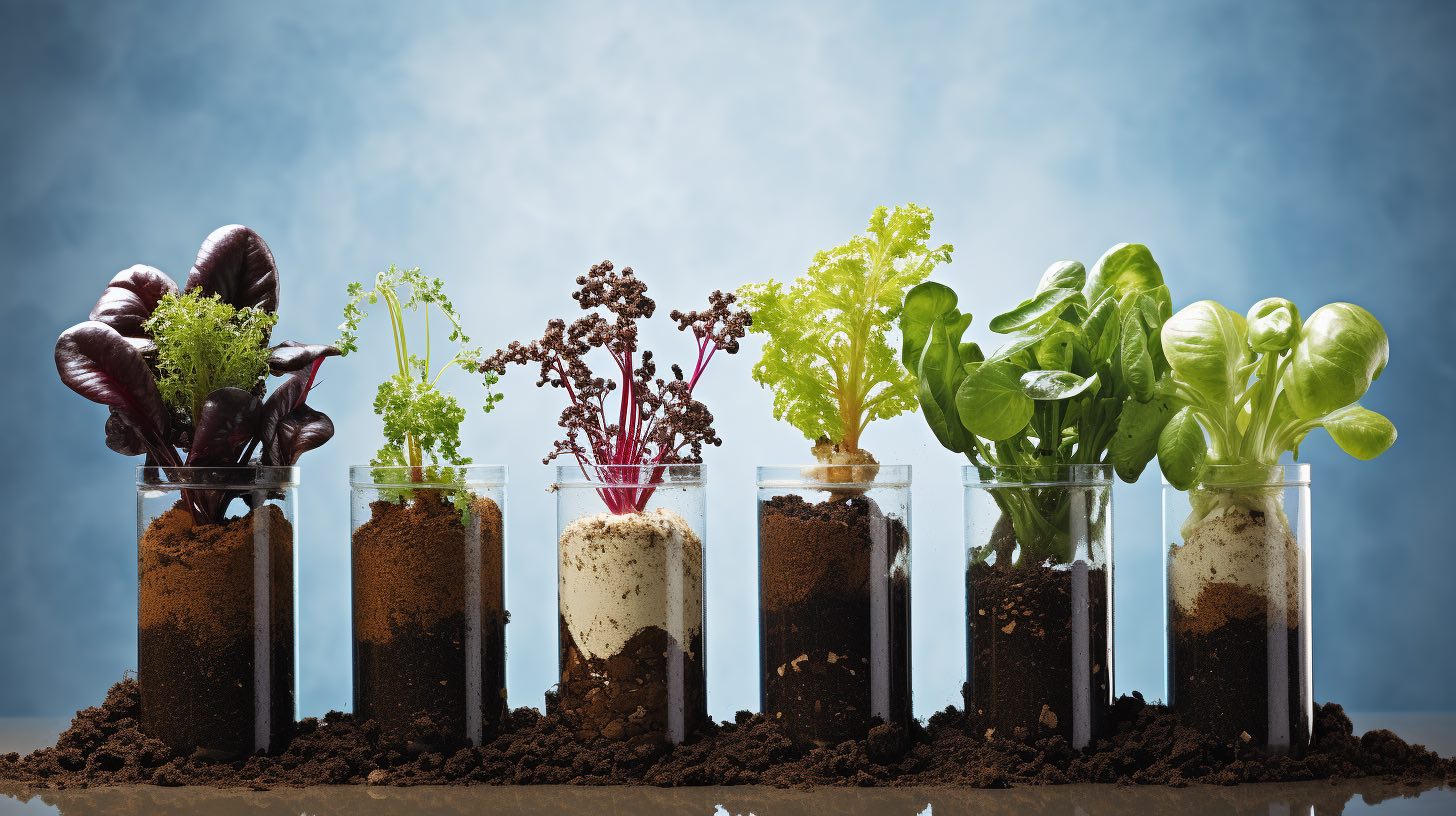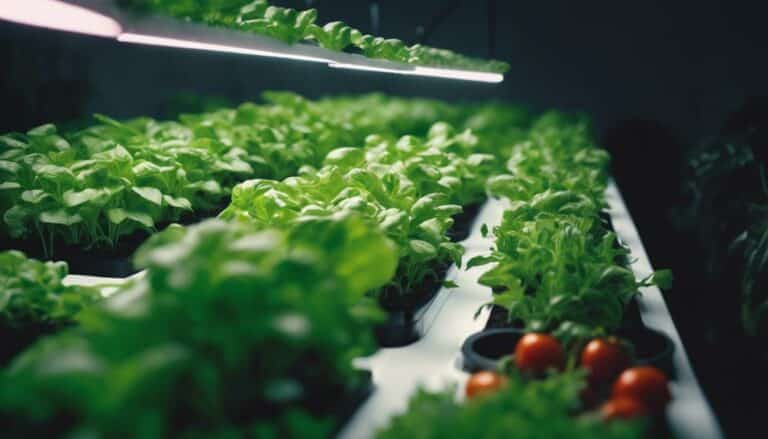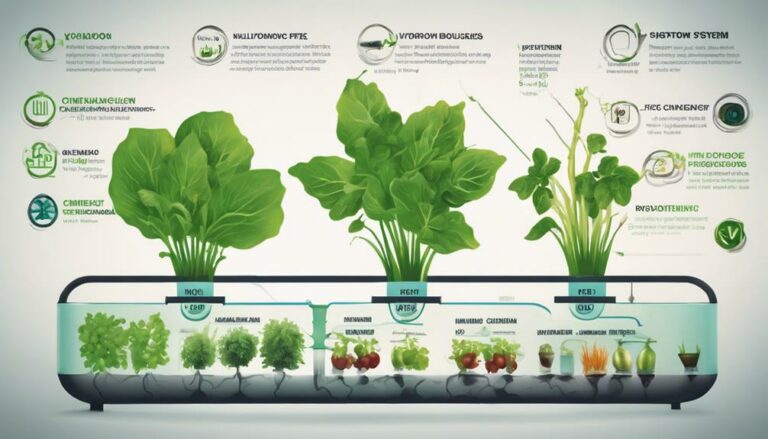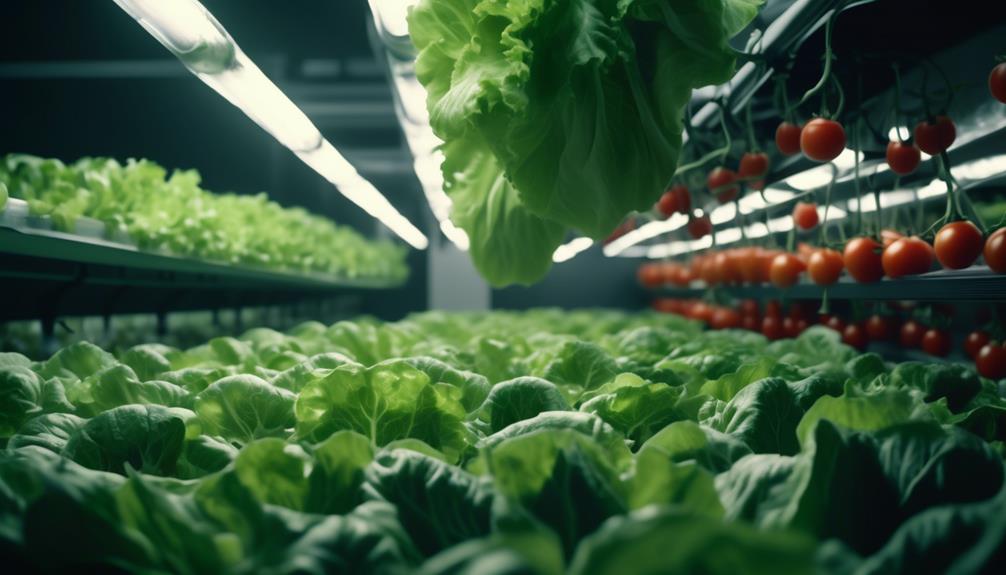I’ve researched the best hydroponic growing mediums available and compiled a detailed comparison guide for you.
In this article, I’ll break down the pros and cons of popular soilless options like rockwool, coco coir, perlite, vermiculite, clay pebbles, and oasis cubes.
Table of Contents
Whether you’re an experienced hydroponic gardener or just starting out, this guide will help you make an informed decision and take your indoor gardening to the next level.
Get ready to explore innovative growing mediums that will revolutionize your plants’ growth.
Key Takeaways
- Rockwool and coco coir are two popular hydroponic growing mediums, with rockwool offering superior moisture retention and air circulation, and coco coir providing excellent water retention capabilities and sustainability.
- Hydroponics offers several advantages over traditional soil-based gardening, including faster growth rates, increased yields, better control over nutrient levels and pH balance, reduced risk of pests and diseases, and lower water usage.
- Perlite is a lightweight and porous growing medium that improves aeration, drainage, and moisture retention, making it a versatile option for hydroponic systems.
- When comparing perlite to vermiculite, perlite promotes healthier growth by preventing waterlogged conditions and improving water and nutrient absorption, while vermiculite retains more water and is better suited for plants that require more moisture. Similarly, when comparing soilless mix to clay pebbles, soilless mix provides a balanced medium with moisture retention and proper drainage, while clay pebbles require more frequent watering and nutrient monitoring but promote healthy root development.
Soilless Mediums
I prefer using soilless mediums for my hydroponic setup because they provide better control over nutrient levels and water retention.
Soilless mediums, such as coco coir, perlite, and vermiculite, offer numerous benefits for hydroponic growing systems. Firstly, they allow for precise control over the nutrient levels by providing a neutral base that can be easily adjusted to meet the specific needs of the plants. This ensures optimal growth and prevents nutrient deficiencies or toxicities.
Secondly, soilless mediums have excellent water retention properties, allowing for proper hydration of the plants without the risk of waterlogging or excessive drainage. This promotes healthy root development and overall plant vigor.
Additionally, these mediums are lightweight, sterile, and free from pests, making them ideal for innovative and clean hydroponic gardening.
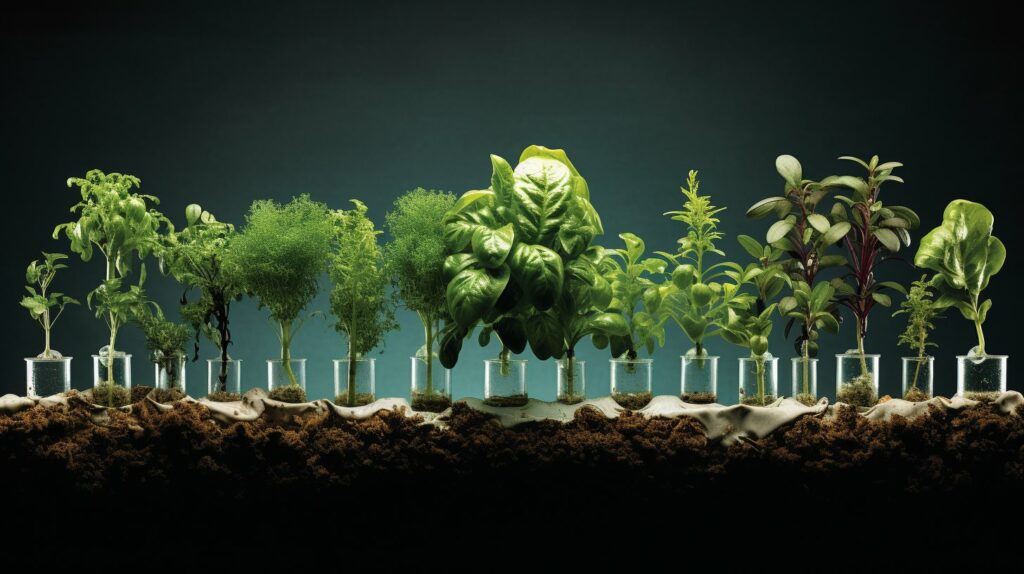
Rockwool
Rockwool is a popular choice for hydroponic growers due to its excellent water retention properties. It’s made from molten rock spun into fibers, creating a porous and absorbent material. Here are four key reasons why rockwool is a preferred option in hydroponic systems:
- Superior moisture retention: Rockwool holds water exceptionally well, providing a consistent water supply to the plants’ roots.
- Excellent air circulation: The porous nature of rockwool allows for proper aeration, ensuring that the roots receive sufficient oxygen.
- pH neutrality: Rockwool has a neutral pH, making it easy to adjust and maintain the optimal pH level for plant growth.
- Sterile and disease-free: Rockwool is manufactured under controlled conditions, minimizing the risk of pests and diseases.
While rockwool is a popular choice, some growers prefer alternatives like coco coir due to its sustainability and eco-friendliness. Coco coir is derived from coconut husks and offers similar water retention capabilities. However, it requires careful management of pH levels and additional nutrients compared to rockwool. Ultimately, the choice between rockwool and coco coir depends on the grower’s preferences and specific needs.
Coco Coir
I’ve had great success using Coco Coir as a growing medium in my hydroponic systems.
Coco Coir, made from the fibrous husk of coconuts, is an excellent alternative to traditional soil.
Not only does it provide a stable and well-draining substrate for plant roots, but it also retains moisture and promotes healthy root development.
Coco Coir Benefits
Coco coir offers a range of benefits for hydroponic gardening. As a sustainable option, it surpasses other soilless mediums in several ways:
- Water retention: Coco coir has excellent water retention capabilities, ensuring that plants have a steady supply of moisture. This reduces the need for frequent watering, making it an efficient choice for busy gardeners.
- Nutrient absorption: Coco coir has a high cation exchange capacity, meaning it can store and release nutrients effectively. This allows plants to easily access the essential elements they need for healthy growth.
- pH balance: Coco coir has a neutral pH, which helps maintain a stable environment for plant roots. Unlike other mediums that may require constant pH adjustments, coco coir provides a consistent growing medium.
- Sustainability: Coco coir is a renewable resource made from the husk of coconuts, making it an environmentally friendly choice. It’s biodegradable and can be easily recycled or composted after use.
When compared to other soilless mediums, coco coir stands out for its water retention, nutrient absorption, pH balance, and sustainability. It offers a versatile and innovative solution for hydroponic gardening needs.
Alternative Growing Mediums
As a gardener, I’ve explored various alternatives to traditional soil mediums for my plants. One of the most innovative and effective options I’ve discovered is hydroponics.
Hydroponics is a soilless method of growing plants that involves providing essential nutrients directly to the plant’s roots through a water-based solution. This method offers several benefits, including faster growth rates, increased yields, and reduced water usage.
By eliminating the need for soil, hydroponics allows for better control over nutrient levels, pH balance, and overall plant health. Additionally, this method minimizes the risk of pests and diseases that are often associated with traditional soil-based gardening.
Overall, hydroponics provides a revolutionary solution for those seeking a more efficient and sustainable way of growing plants.
Coco Coir Vs Soil?
When it comes to hydroponics, there are various growing medium options available. One popular choice is coco coir, which offers several benefits for those looking to innovate their growing techniques. Here are four reasons why growing in coco coir is advantageous:
- Water retention: Coco coir has excellent water-holding capacity, allowing plants to access water as needed. This reduces the risk of over or under-watering, promoting healthier root development.
- Nutrient absorption: Coco coir acts as a sponge, absorbing and releasing nutrients as required by the plants. This ensures that the plants receive a steady supply of essential nutrients for optimal growth.
- pH stability: Coco coir has a natural pH range of 5.5 to 6.5, making it ideal for hydroponic systems. This stability helps maintain a balanced nutrient uptake by the plants.
- Sustainability: Coco coir is a renewable resource made from coconut husks, making it an environmentally friendly choice. It can be reused multiple times, reducing waste and promoting sustainability in hydroponic farming.
Overall, growing in coco coir offers numerous benefits, making it a worthy alternative to traditional soil-based methods.
Perlite
Perlite is a lightweight volcanic rock that’s often used as a growing medium in hydroponic systems. It has excellent drainage properties and helps to prevent soil compaction, allowing for better aeration and root development.
Perlite also retains moisture, making it a great choice for plants that require good water management.
Perlite Vs. Soilless Mix
I prefer using perlite over soilless mix for my hydroponic setup. Here’s why:
- Perlite vs. Vermiculite: Perlite is a lightweight, volcanic glass that provides excellent aeration and drainage for plant roots. It helps prevent waterlogged conditions and allows oxygen to reach the roots, promoting healthier growth. Vermiculite, on the other hand, retains more water and is better suited for plants that require more moisture.
- Soilless Mix vs. Clay Pebbles: Soilless mix is a blend of various organic and inorganic materials, such as peat moss, coconut coir, and perlite. It provides a well-balanced medium for plant growth, retaining moisture while also allowing for proper drainage. Clay pebbles, also known as hydroton, are inert, lightweight balls that provide good aeration and drainage. However, they require more frequent watering and nutrient monitoring.
- Perlite’s Advantages: Perlite is lightweight, sterile, and pH-neutral, making it an ideal medium for hydroponic systems. It improves water and nutrient absorption, reducing the risk of overwatering and nutrient deficiencies. It also helps prevent root rot and disease, promoting healthier plants overall.
- Innovation Potential: Perlite’s unique properties make it a versatile medium for hydroponic systems. Its lightweight nature allows for easy transportation and handling, making it suitable for vertical gardening and space-saving setups. Additionally, its neutral pH and sterility provide a clean and efficient environment for plant growth, enabling innovative techniques like nutrient film technique (NFT) or deep water culture (DWC).
Benefits of Using Perlite
One of the benefits of using perlite is its ability to improve aeration and drainage for plant roots. Perlite is a lightweight, porous material made from volcanic glass. It is commonly used as a growing medium in hydroponics due to its unique properties. Unlike vermiculite, perlite does not retain water, allowing excess moisture to drain away and preventing waterlogged roots. This promotes healthy root growth and reduces the risk of root rot. Additionally, perlite helps to aerate the root zone by creating air pockets in the growing medium. This improves oxygenation and nutrient uptake, leading to faster and more vigorous plant growth. In hydroponics, where plants rely solely on nutrient solutions, perlite is a valuable tool for creating optimal growing conditions.
| Perlite | Vermiculite |
|---|---|
| Lightweight | Absorbs water |
| Improves aeration | Retains water |
| Enhances drainage | Provides moisture |
| Prevents waterlogged roots | Promotes water retention |
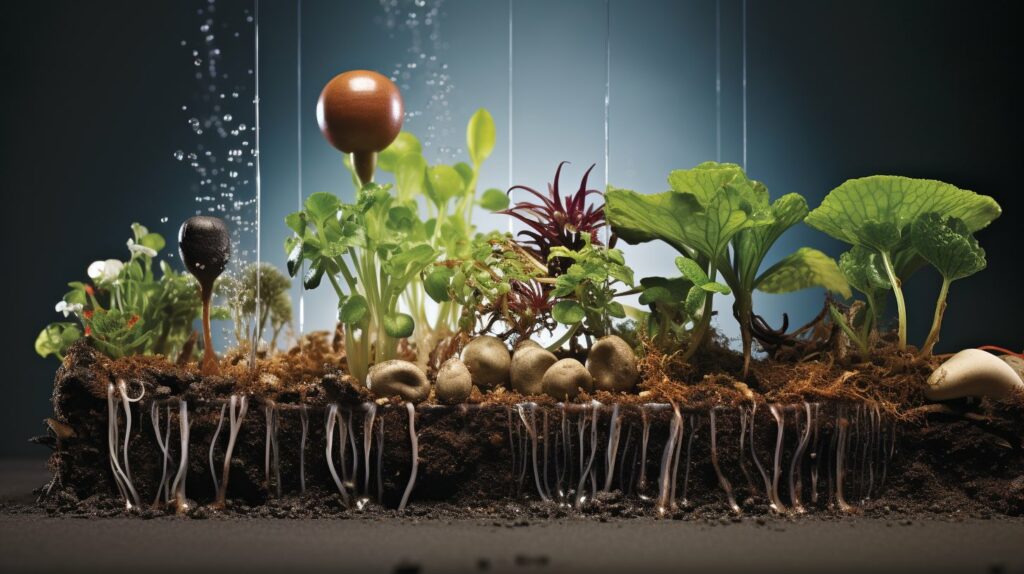
Vermiculite
Vermiculite is a popular choice for hydroponic growers due to its ability to retain water and improve soil aeration. This unique growing medium possesses several properties that make it an excellent option for innovative growers.
Here are some key properties of vermiculite compared to other growing mediums:
- Water Retention: Vermiculite has exceptional water-holding capacity, allowing plants to access moisture when needed. This reduces the risk of overwatering and ensures consistent hydration.
- Aeration: Vermiculite also promotes soil aeration by creating air pockets within the growing medium. This helps roots access oxygen, facilitating their growth and nutrient uptake.
- Nutrient Retention: Vermiculite has the ability to retain and release nutrients gradually, providing a steady supply to plants. This ensures optimal nutrition and minimizes nutrient wastage.
- pH Adjustment: Vermiculite has a neutral pH, which helps stabilize the pH of the hydroponic system. This is crucial for maintaining optimal nutrient uptake by plants.
Clay Pebbles
When it comes to hydroponic growing mediums, clay pebbles are a popular choice among innovative growers like myself. These small, lightweight balls of clay have numerous benefits that make them a top contender in the world of hydroponics.
One of the key advantages of clay pebbles is their excellent drainage capabilities. They allow for optimal oxygenation of the roots, preventing waterlogging and ensuring healthy plant growth. Additionally, clay pebbles provide great support for the plants, preventing them from falling over and promoting sturdy root development.
Compared to rockwool, another common hydroponic growing medium, clay pebbles offer better aeration and drainage. Rockwool tends to retain more water, which can lead to root rot if not managed properly. On the other hand, clay pebbles allow excess water to flow through, preventing moisture-related issues.
Oasis Cubes
I really appreciate the versatility of Oasis Cubes as a growing medium for my hydroponic plants. These small, foam-like cubes are specifically designed for hydroponic systems and have proven to be a game-changer for my hydroponic lettuce.
Here’s why:
- Excellent water retention: Oasis Cubes retain water exceptionally well, ensuring that my lettuce roots stay hydrated and nourished.
- Balanced pH levels: These cubes help maintain a stable pH level, which is crucial for the healthy growth of hydroponic lettuce.
- Optimal air circulation: The porous structure of Oasis Cubes allows for proper air circulation around the roots, promoting oxygenation and preventing root rot.
- Easy transplanting: Oasis Cubes are easy to handle and transplant, making it convenient to move my lettuce from the germination stage to the hydroponic system.
With Oasis Cubes, I’ve experienced consistent and impressive results in growing hydroponic lettuce, making it an indispensable part of my innovative hydroponic setup.
Which Hydroponic System is Best for Using Different Growing Mediums?
When it comes to using different growing mediums, the choice of hydroponic systems for leafy greens can make a significant difference. The Nutrient Film Technique (NFT) is known for its compatibility with different substrates, allowing efficient nutrient delivery. On the other hand, Deep Water Culture (DWC) systems prove effective for providing continuous oxygenation and water circulation, ideal for various growing mediums. Ultimately, the best hydroponic system depends on the specific needs and preferences of the growers.
Frequently Asked Questions
How Often Should I Water My Plants When Using Hydroponic Growing Mediums?
When using different hydroponic growing mediums, it’s important to consider the watering frequency. Each medium has its own pros and cons, which can affect how often you need to water your plants.
Can I Reuse Hydroponic Growing Mediums After a Crop Cycle?
Yes, hydroponic growing mediums can be reused after a crop cycle. Reusing these mediums offers numerous benefits, such as cost savings, reduced waste, and improved sustainability in hydroponic systems.
Are There Any Specific Nutrients or Fertilizers That Work Best With Each Type of Growing Medium?
In hydroponics, specific nutrients and fertilizers are crucial for optimal plant growth in different growing mediums. Understanding the nutrient requirements and selecting the appropriate fertilizers can greatly enhance the performance of your hydroponic system.
What Is the Best Way to Sterilize Hydroponic Growing Mediums Before Use?
The best way to sterilize hydroponic growing mediums before use is by using heat or chemical treatments. Heat sterilization is efficient and environmentally friendly, while chemical treatments can be quicker but may have potential drawbacks.
Can I Mix Different Types of Growing Mediums Together to Create a Custom Blend?
Yes, you can mix different types of growing mediums together to create a custom blend. This allows for more control over the nutrient composition and water retention, providing benefits and alternative options for hydroponic gardening.
Conclusion
In conclusion, when it comes to hydroponic growing mediums, there are several options to choose from.
Rockwool is a popular choice due to its excellent water retention and aeration capabilities.
Coco coir offers a sustainable and environmentally friendly alternative.
Perlite and vermiculite provide excellent drainage properties.
Clay pebbles are ideal for plants that require good oxygen levels.
Oasis cubes offer convenient and versatile options.
Ultimately, the choice of growing medium will depend on the specific needs and preferences of the plants being cultivated.

